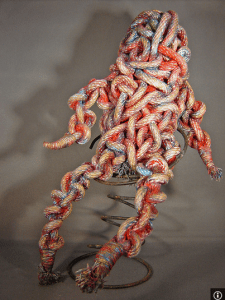One of the more interesting features of the Lord’s Prayer is that it is both like a Jewish prayer, called the Qaddish, and at the same time unlike that same prayer.
The Qaddish reads like this:
Magnified and sanctified be his great name in the world He created according to His will. May He establish His kingdom during your life and during your days, and during the life of all the house of Israel, speedily and in the near future. And say Amen.
Now this prayer sounds very much like the Lord’s Prayer, and most scholars have argued that the Lord’s Prayer is actually “Jesus’ version of the Qaddish.” This makes sense to most of us. What this explains is the first half of the Lord’s Prayer, which goes like this (in Matthew):
Our Father who is in the heavens:
May your Name be sanctified.
May your Kingdom come;
may your will be done — as in heaven so also on earth.
What isn’t explained is this: if Jesus did adapt the Qaddish, why does he continue on with his requests about bread, forgiveness, and temptation? Those bits are not in the Qaddish.
In the Jesus Creed, I make a suggestion that helps explain why Jesus has the second part of the Lord’s Prayer. It goes like this:
The Lord’s Prayer is neatly divided into two parts: the “You” petitions and the “We”/”Us” petitions. The first half is about God, and the second part is about humans or others.
Now, what I observed was that the Shema (the “Hear O Israel:… Love the Lord your God with all your …”) was recited twice a day by Jews. But, the distinct thing with Jesus is that when he recited it, according to Mark 12:28-32, he “amended” it by adding a second part. The Shema was a creedal confession of the need to love God. Jesus added to this a text from Lev 19:18: “love your neighbor as yourself.” For him the sacred Shema was about loving God and loving others. This is Jewish, but it is an amendment of a sacred creed. This is what I think the “new commandment” of John 13 is about.
I call this Jesus’ version of the Shema the “Jesus Creed.”
Now, put together we have this: Jesus thought the fundamental duty of life was to love God and to love others.
Now we can go back to the Lord’s Prayer and the added stuff in the “we/us” petitions: why did Jesus amend the Qaddish? I suggest the same thing is going on here as went on in how Jesus amended the Shema: the Qaddish was about prayer to God, and now Jesus wants his followers to pray about God and about others. As he saw love to be both about God and others, so he say prayer to be about God and about others.
Which leads me to today’s conclusion: the Lord’s Prayer is what happened to the Qaddish when Jesus applied his version of the Shema to it. The Lord’s Prayer is what happens to the Qaddish under the influence of the Jesus Creed.
This leads to a beautiful thought for all of us: the Lord’s Prayer guides us in how we should pray if we love God and love others. If we love God, we pray like the first half; if we love others, we pray like the second half.
Tomorrow, we’ll look at the first half as an example of what those who love God pray to God about.















